

Agrigento
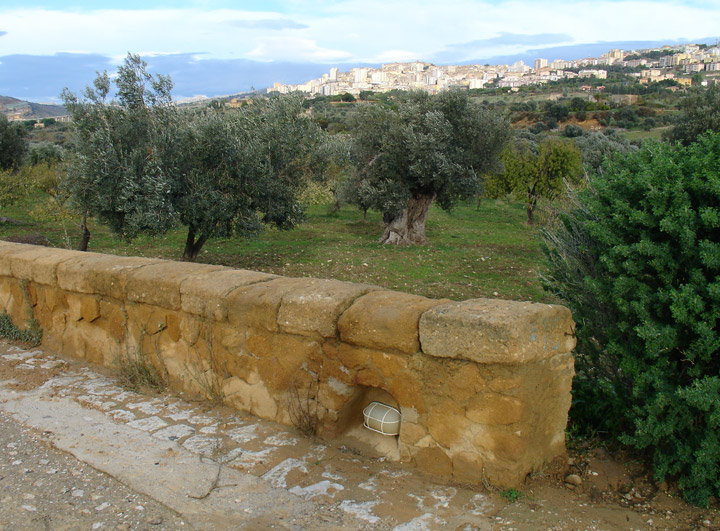
the town of Agrigento on the hill behind the olive trees
Agrigento (Latin Agrigentum; Greek Akragas), city, Italy, southern Sicily, capital of Agrigento Province, on the Mediterranean Sea. The city is a tourist and an agricultural center; manufactures include processed cement, sulfur, and furniture. The city has ruins of some 20 Doric temples (6th and 5th century BC) and an archaeological museum.
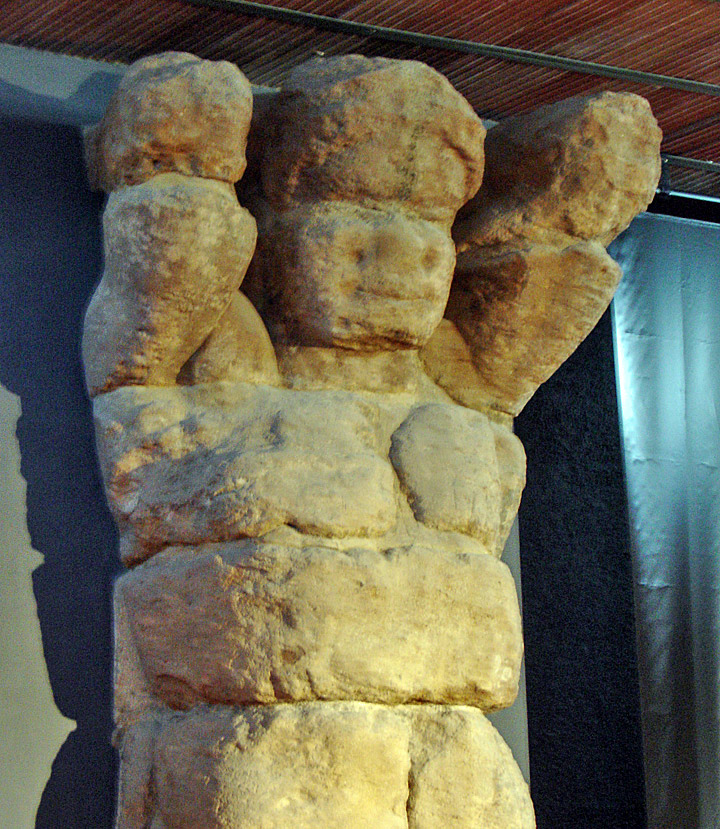
telamon figure from the temple of
Zeus
now in the Archaeological Museum
Photos from the Archaeological Museum
Photos from the Temple of Zeus
Agrigento was founded by Greeks from the city of Gela about 582 BC and became an
important trading and cultural center with a population of about 200,000. After
406 BC, when it was sacked by a force from Carthage, the city (then known as
Akragas) declined in importance, although it remained large. In 262 BC it was
incorporated into the Roman Empire and became known as Agrigentum. It was called
Girgenti from the early Middle Ages until 1927, when the name was officially
changed to Agrigento. Population 55,877 (1997 estimate).
Text from Microsoft Encarta
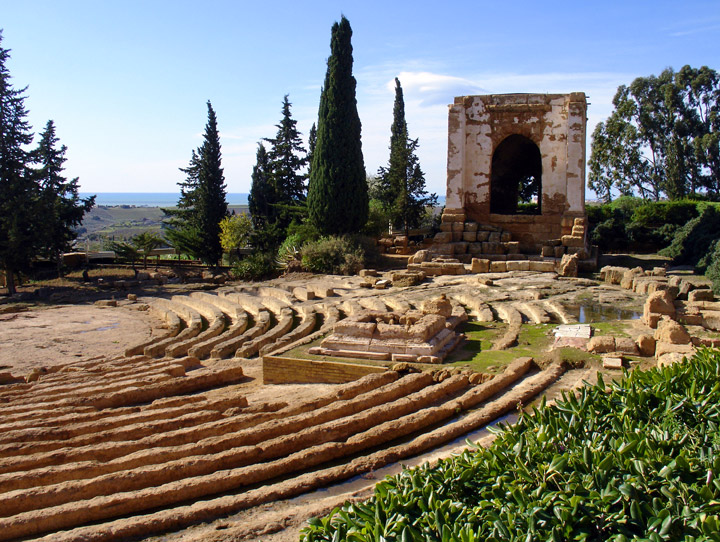
Odeon
the Ekklesiasterion
(built in the 3rd century BC for public meetings)
Temple of Hercules

the temple of Hercules
More Photos of the Temple of Hercules
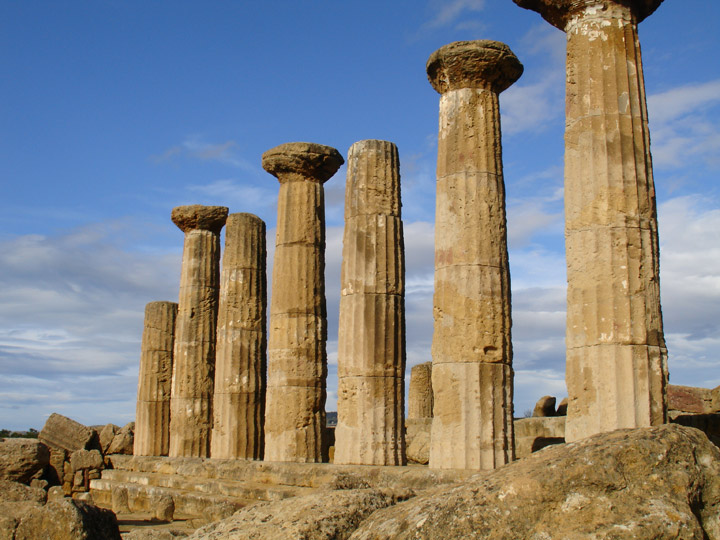
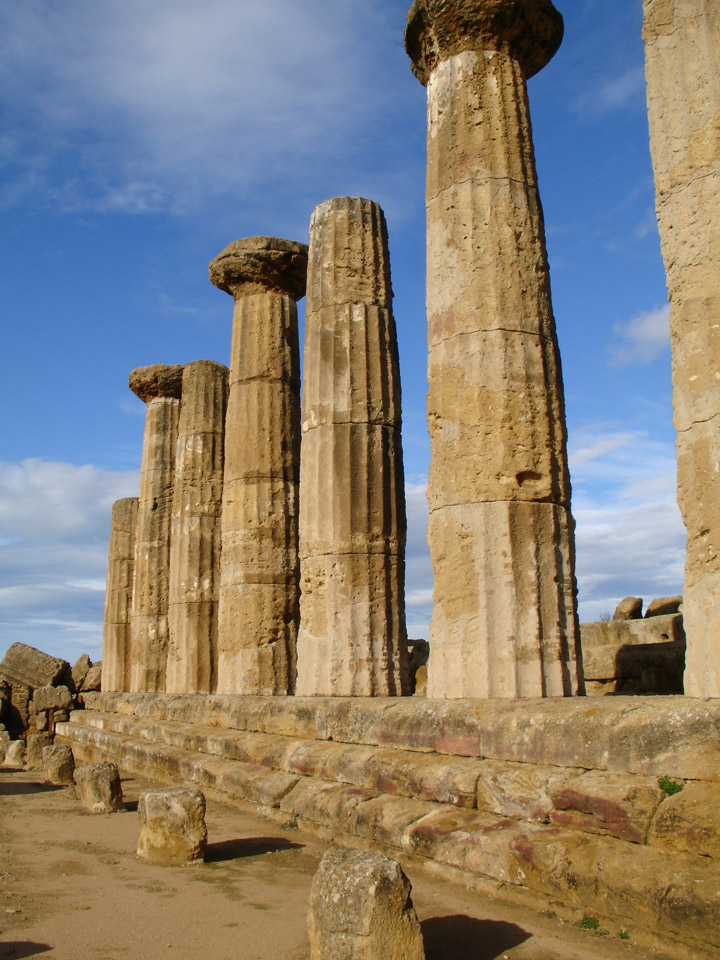
The Ridge Tuft Rock and
Roman and Byzantine tombs
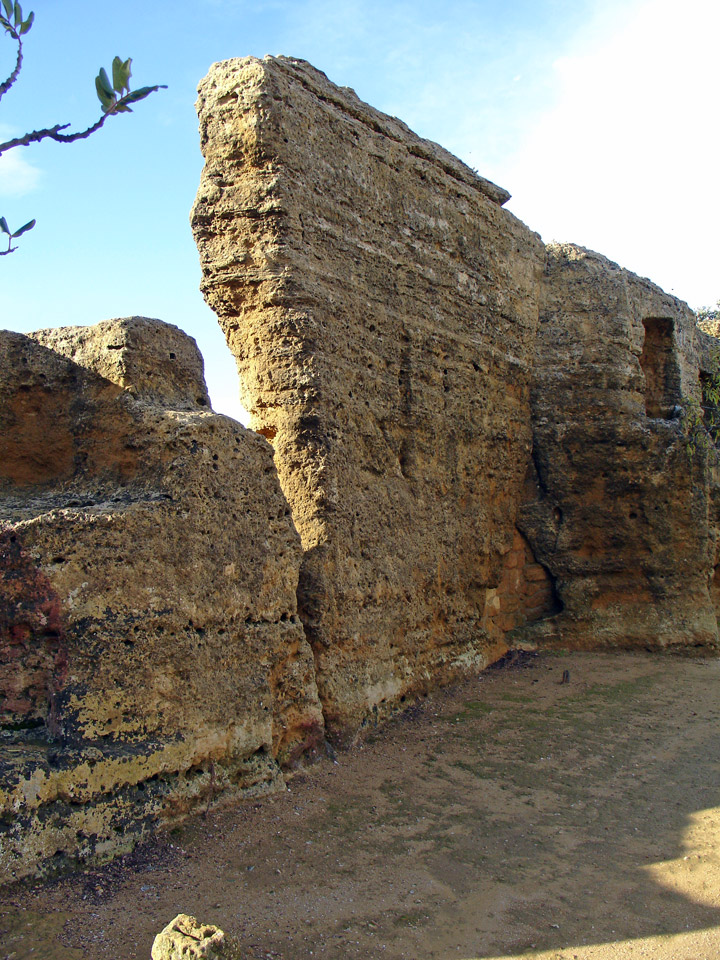
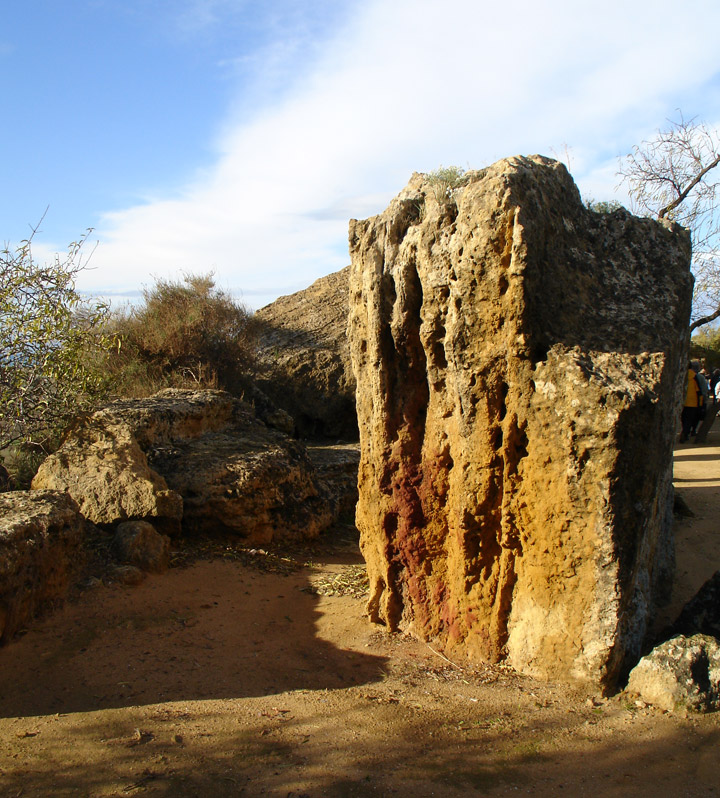
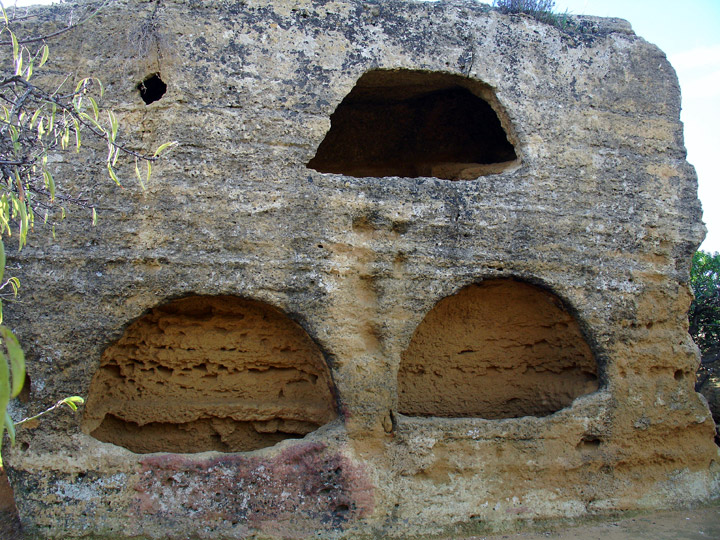
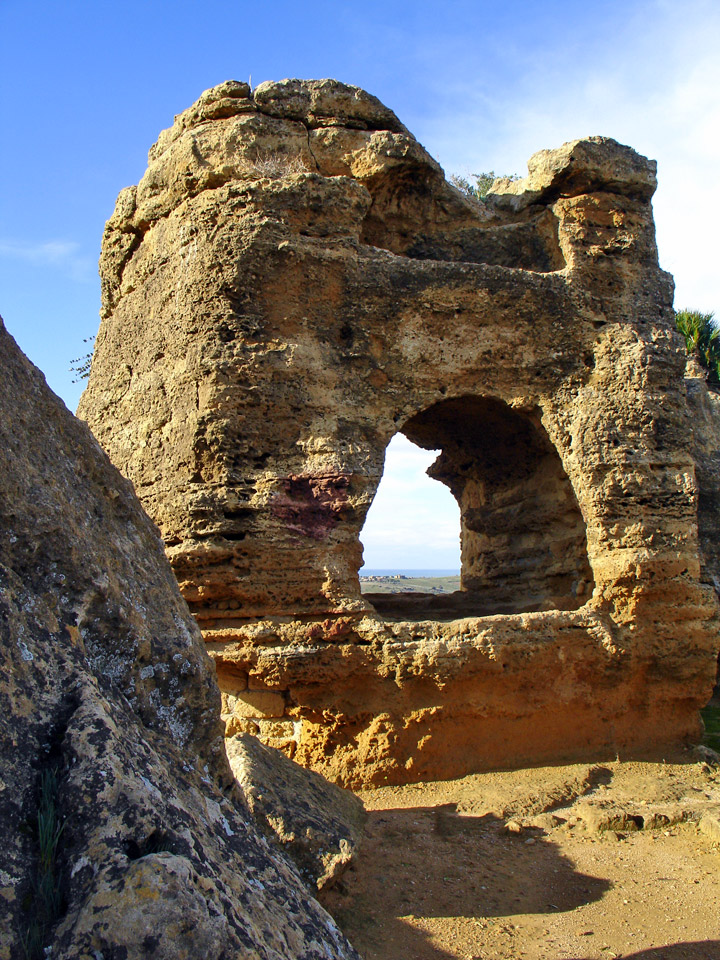
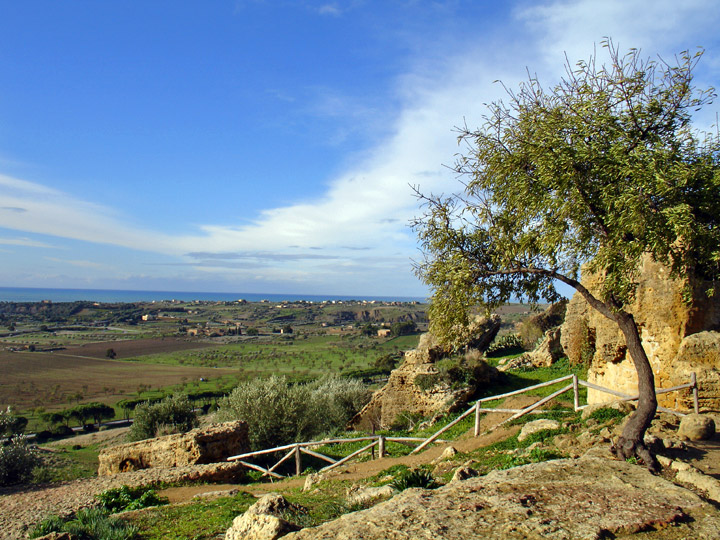
looking from the ridge to the sea
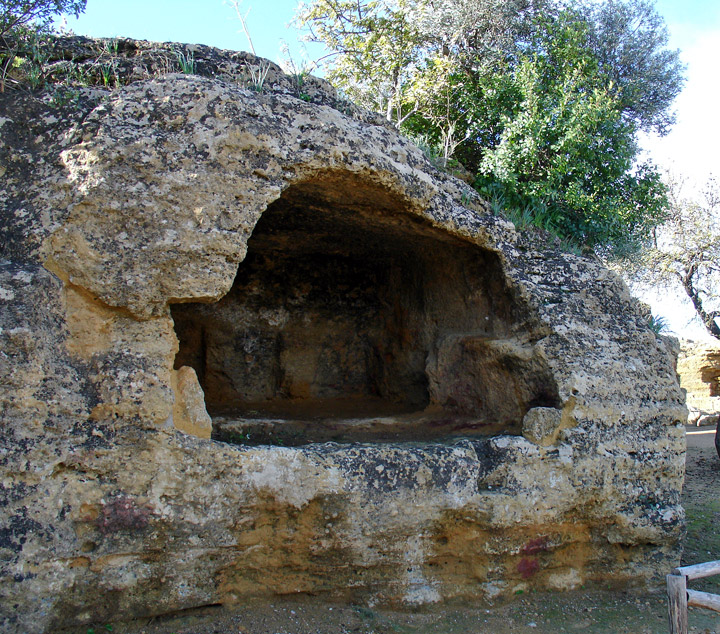
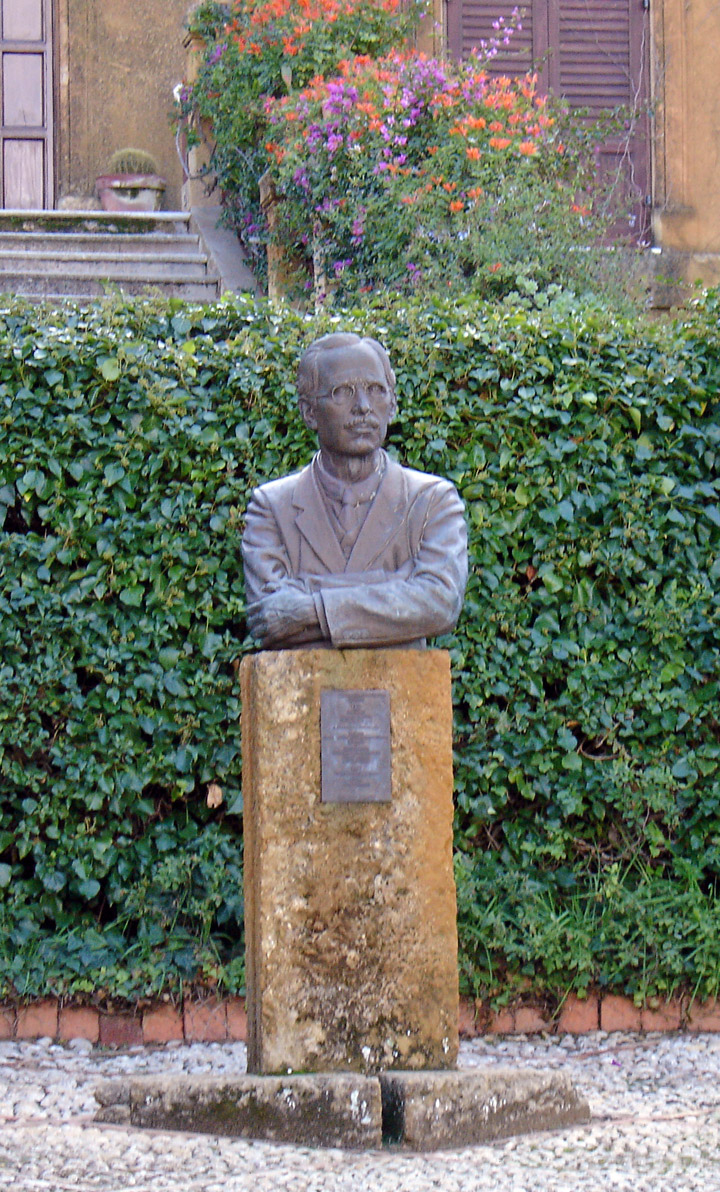
the English gentleman who once had this villa within today's archeological park
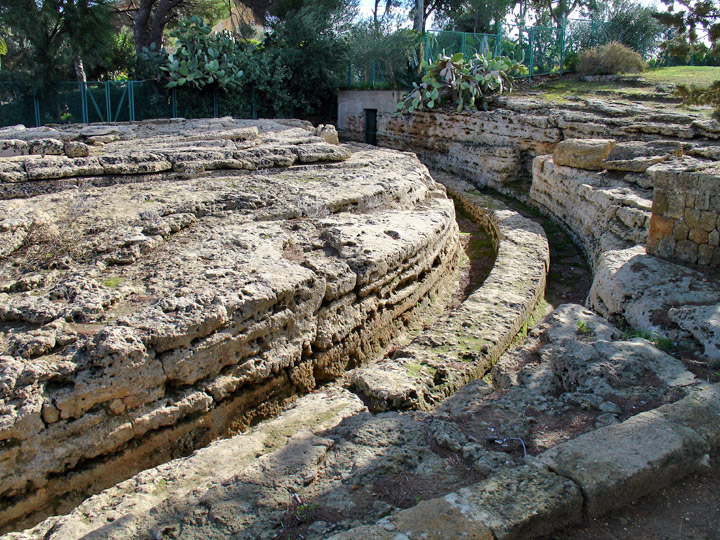
remains from Greek and Roman times
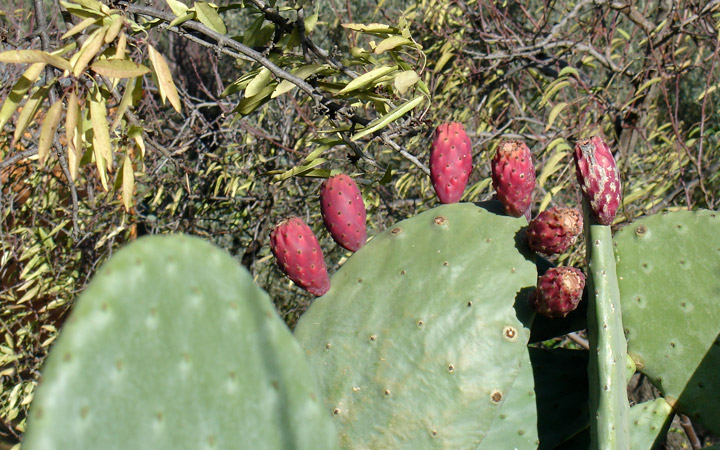
fruit of the cactus
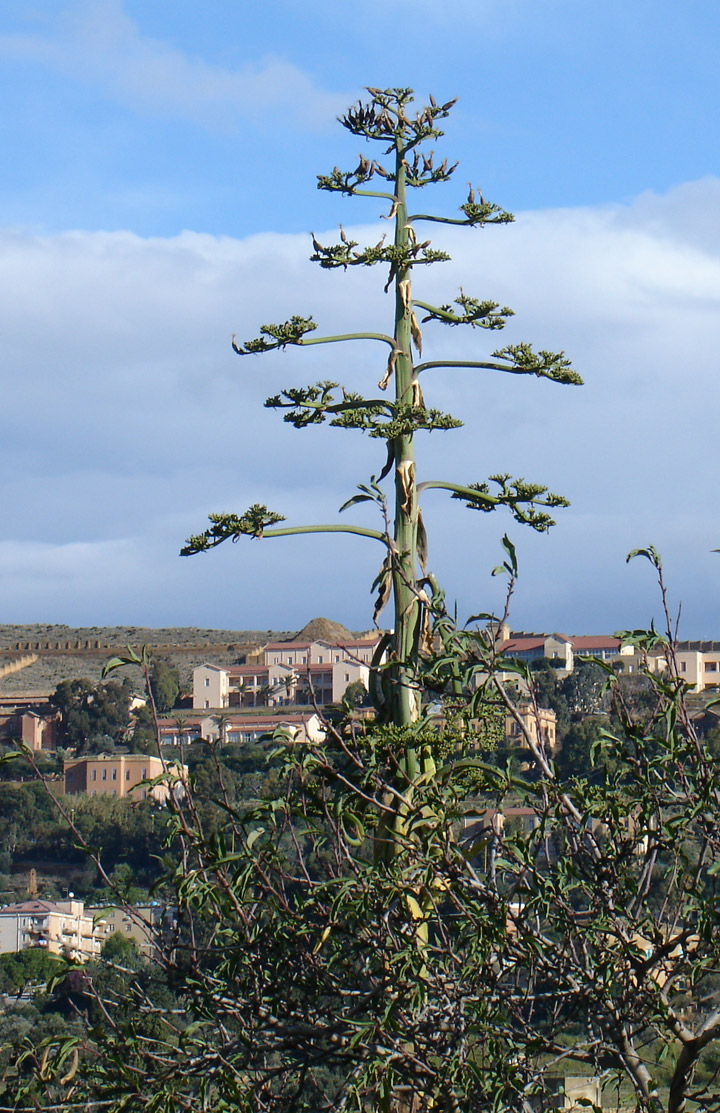
flower of the yucca
temple of Concorde
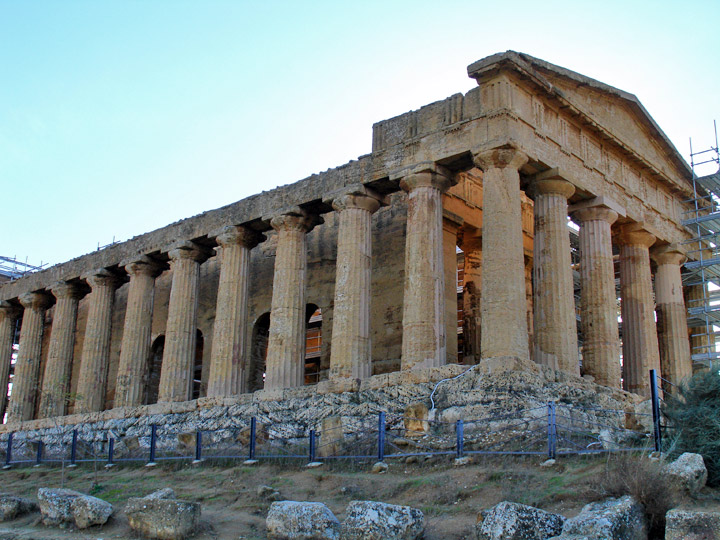
The temple of Concorde is the only temple still standing in its whole. It was built in 430 BC, and in the 6th century BC it was changed into a sacred building. You can still see the arches included in the central cell walls. Here there are massive tapered columns and the frieze is decorated with triglyphs and metopes. The name Concorde comes from a Latin inscription founded nearby the temple itself.

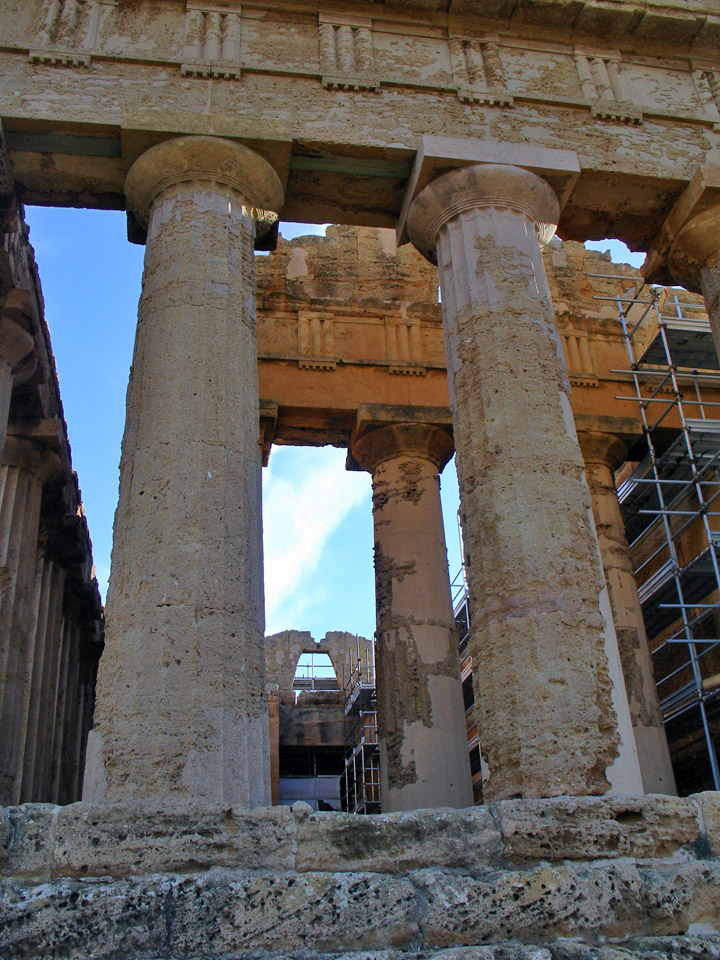
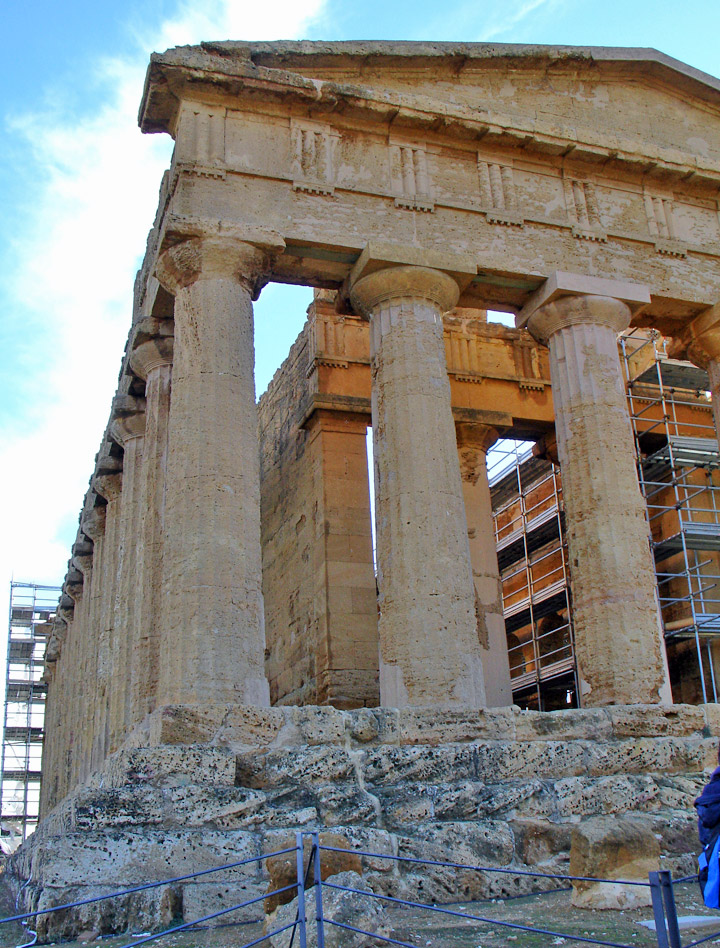
Temple of Hera
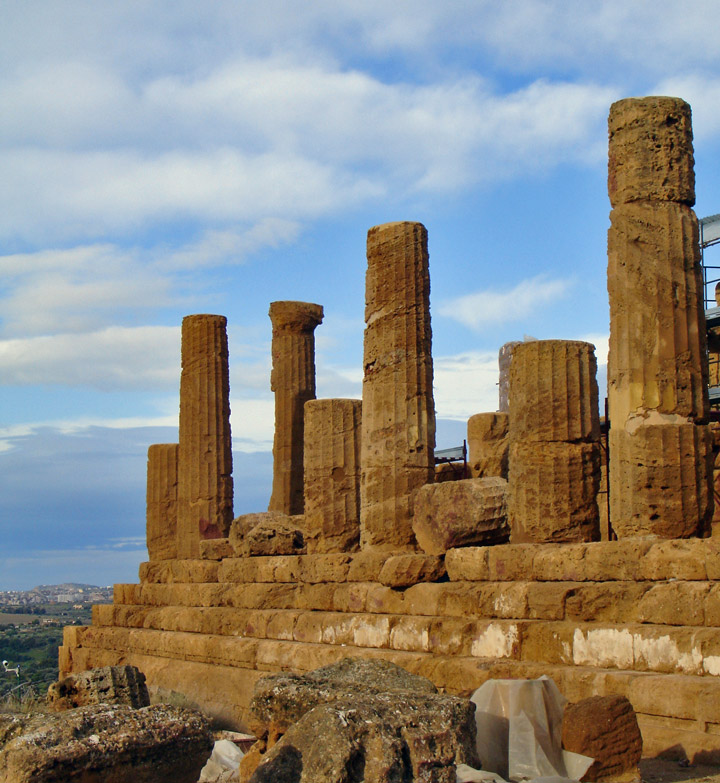
The temple of Hera Lacinia (Juno) was built around the 5th century BC and set on fire by the Carthaginians in 406 BC. It was attributed to Juno, the goddess of marriage and birth, and it still keeps unchanged the entrance cell colonnade (in part restored in the 20th century).
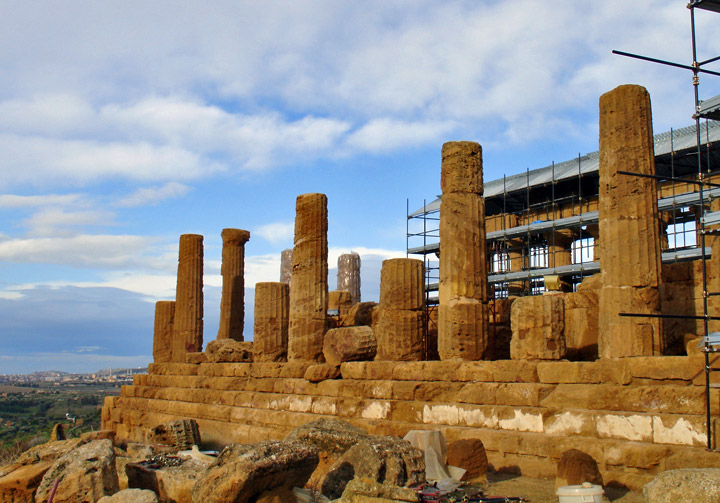
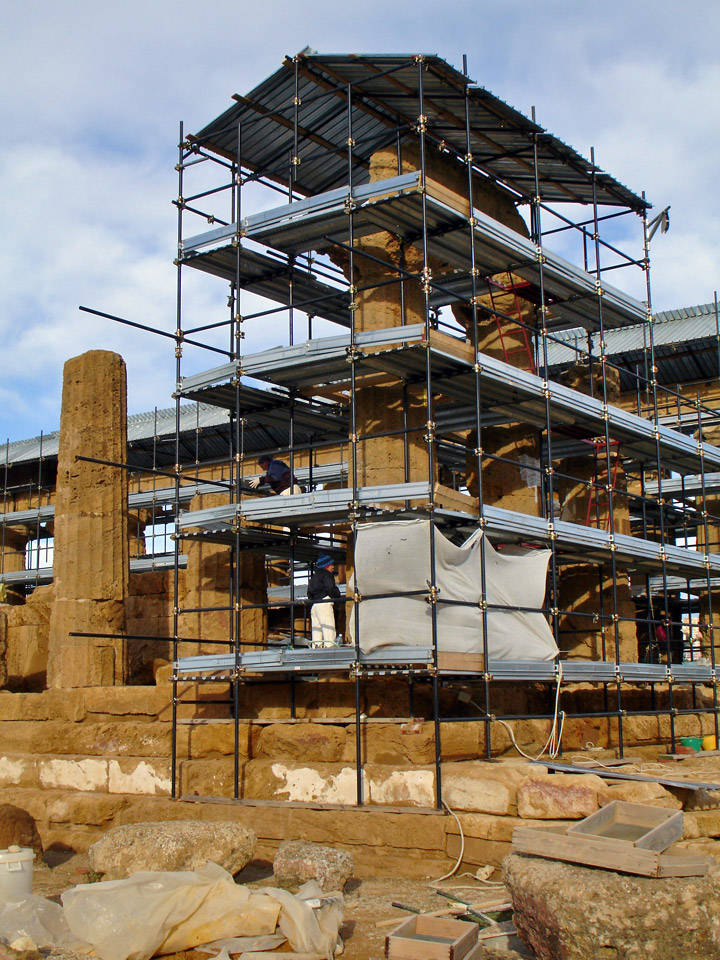
crew doing restoration work
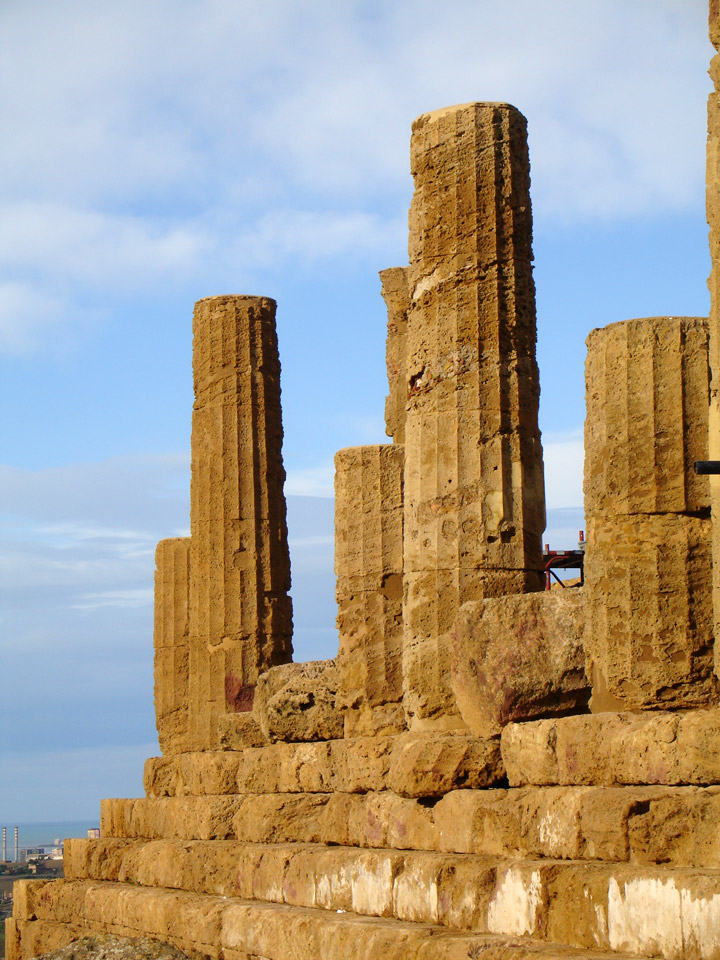
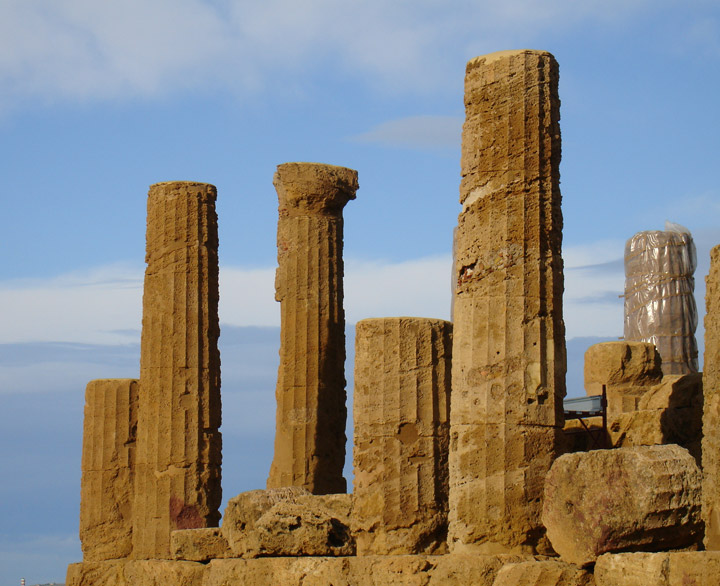
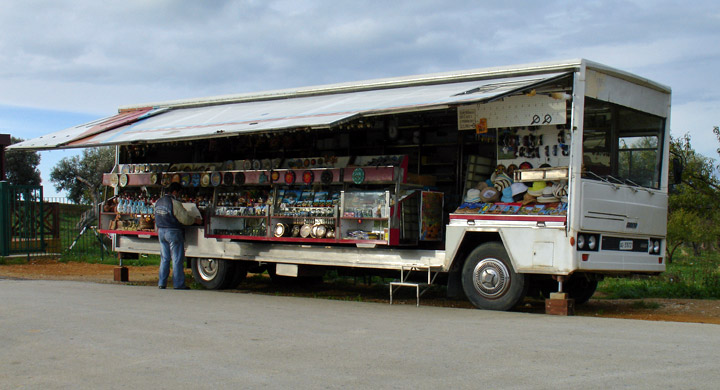
mobile tourist curio stand
Photos of the Agrigento Heritage program